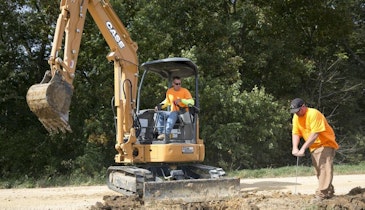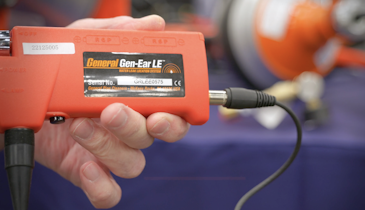Interested in Trucks?
Get Trucks articles, news and videos right in your inbox! Sign up now.
Trucks + Get AlertsFor the past few months we have gone through a series of troubleshooting issues from the service provider’s perspective. A question I often get is what should the service provider do after identifying and fixing the problem?
This is an opportunity to educate the homeowner about their system so be prepared to discuss system maintenance. Be sure to look at the area around the system for other potential problems that the homeowner can address. Examples include avoiding any kind of traffic over the area of the system, which includes recreational vehicles, pickups, ATVs and snowmobiles.
System area disturbances
In cold climates, remind homeowners to keep pets off the system area. Dogs should not be tied out where they will track over the system. Animal traffic can drive the frost deeper into the ground causing freezing problems. The system area should not be used to feed wildlife such as deer or turkeys.
Another issue to stress is keeping excess water off the system. One common area of concern is ensuring downspouts do not deliver water across the system, which can interfere with drainfield function. Other sources of runoff include water from driveway areas or other hard surfaces.
Before leaving the site, observe the flow into the tank while the homeowner flushes each toilet in the house. It’s better to do this seemingly routine task than to find out after the fact that a line is still blocked.
Final report
Leave a final report with the homeowner that covers the work done, any other discrepancies or issues such as those outlined above, how many gallons were removed from the tank, etc. Now is a good time to discuss a regular pumping and maintenance schedule. If there is a need for follow-up work, make necessary arrangements.
Leave any appropriate literature explaining the use and care of the septic system. Fact sheets are available through the U.S. EPA SepticSmart program or state extension offices. Many manufacturers have customized fact sheets or information so discuss those with the homeowner.
Throughout the troubleshooting process I have highlighted the need for constant communication with the homeowner. This is the opportunity to solidify that relationship and create a long-lasting customer. It is important to follow up on any action plan created with the homeowner. Of course, the final piece is collecting for the services rendered.
About the Author
Jim Anderson is connected with the University of Minnesota onsite wastewater treatment education program, is an emeritus professor in the university’s Department of Soil Water and Climate, and education coordinator for the National Association of Wastewater Technicians. Send him questions about septic system maintenance and operation by email to kim.peterson@colepublishing.com.






